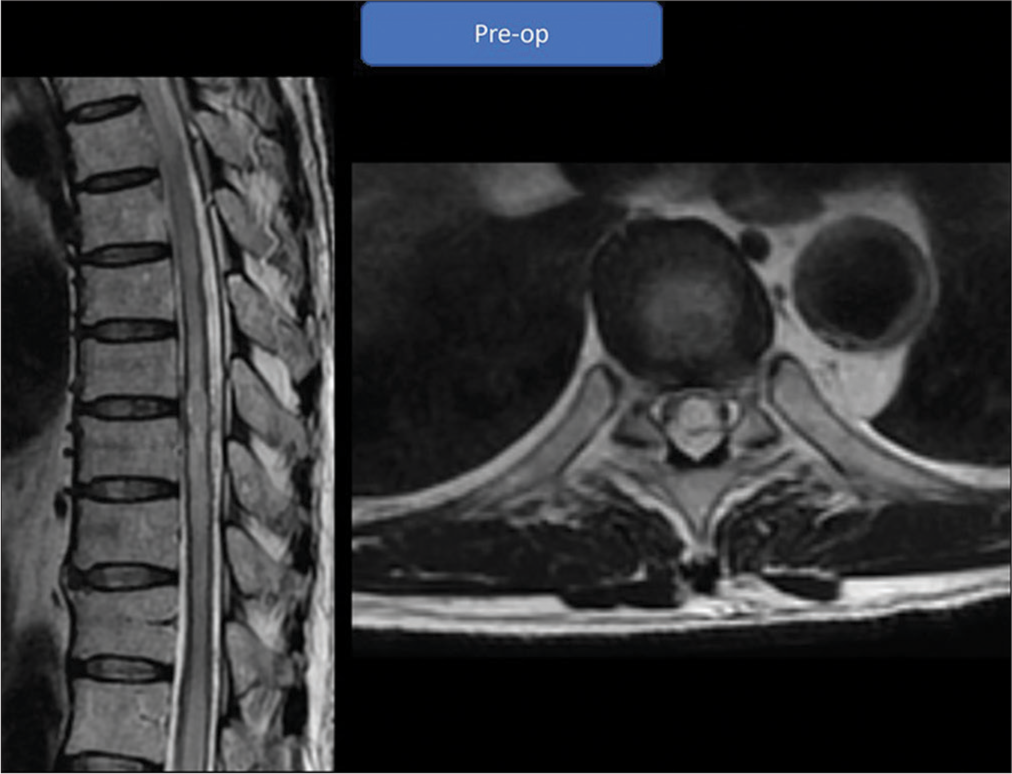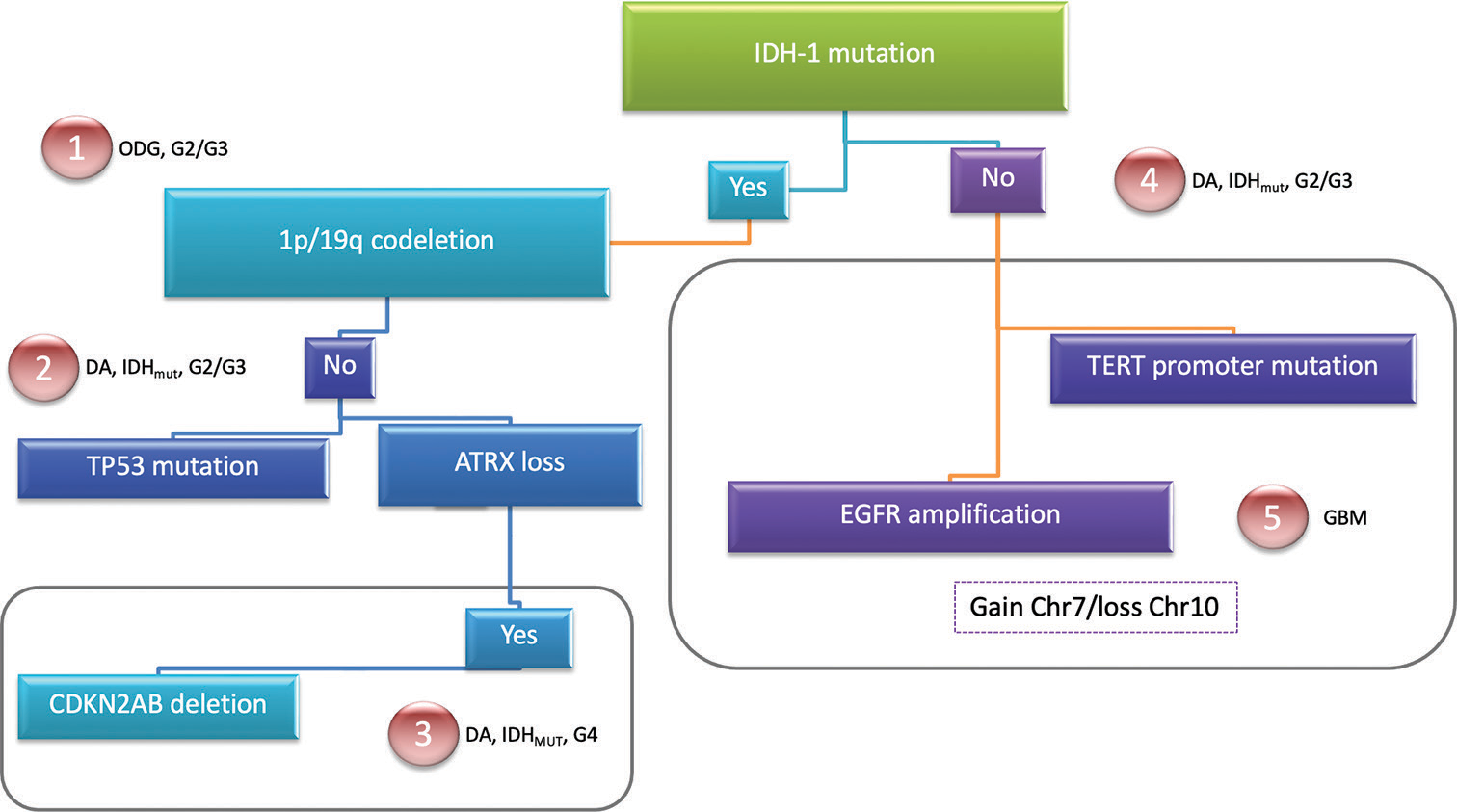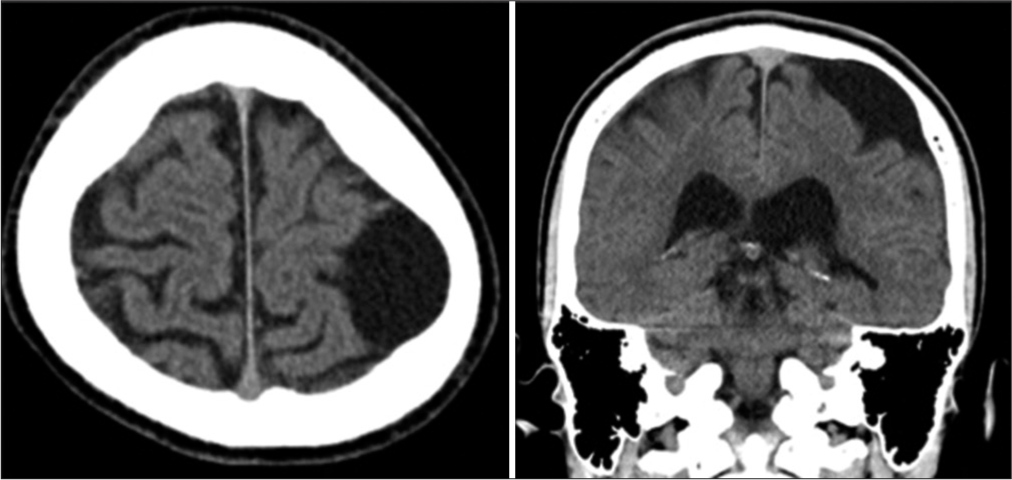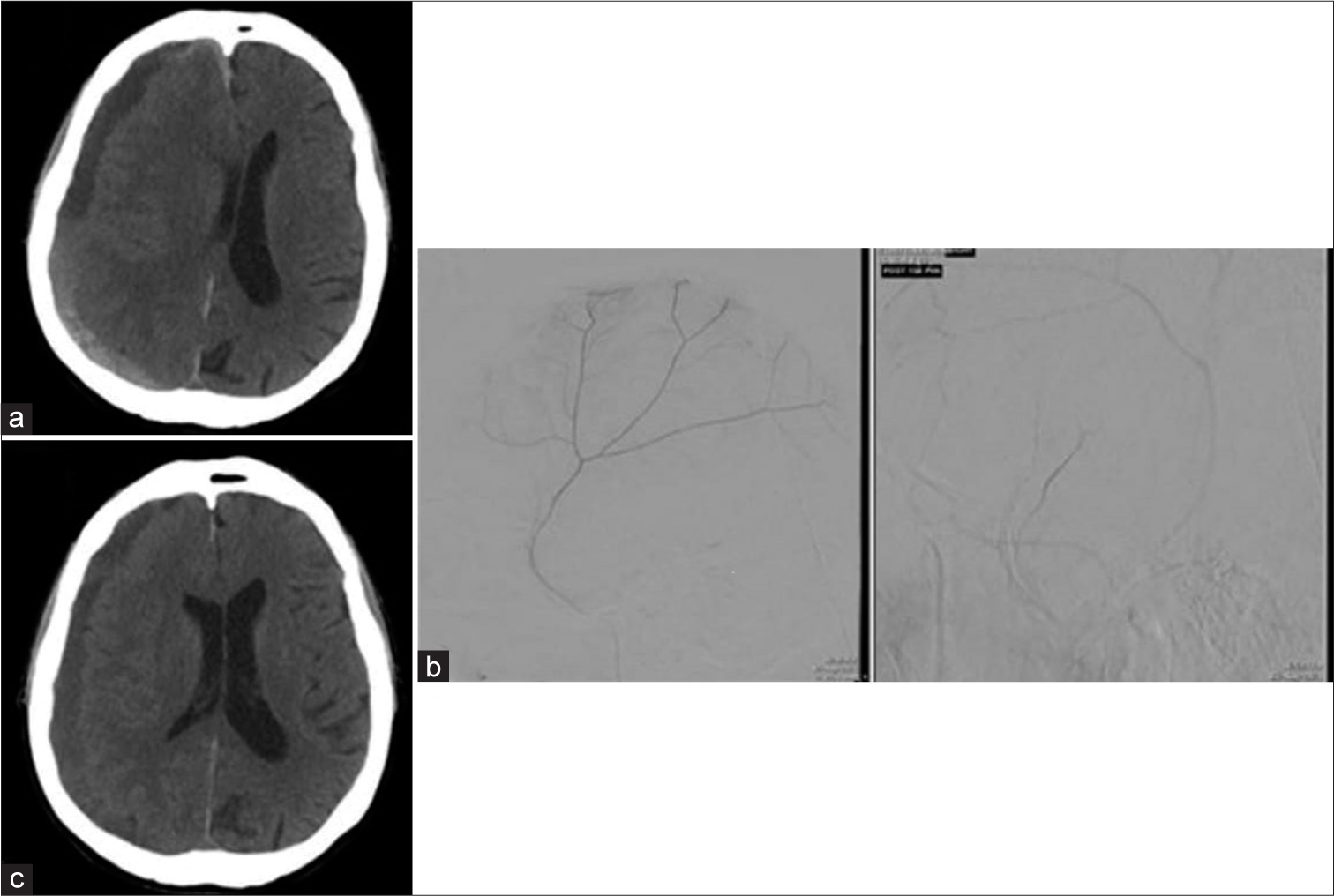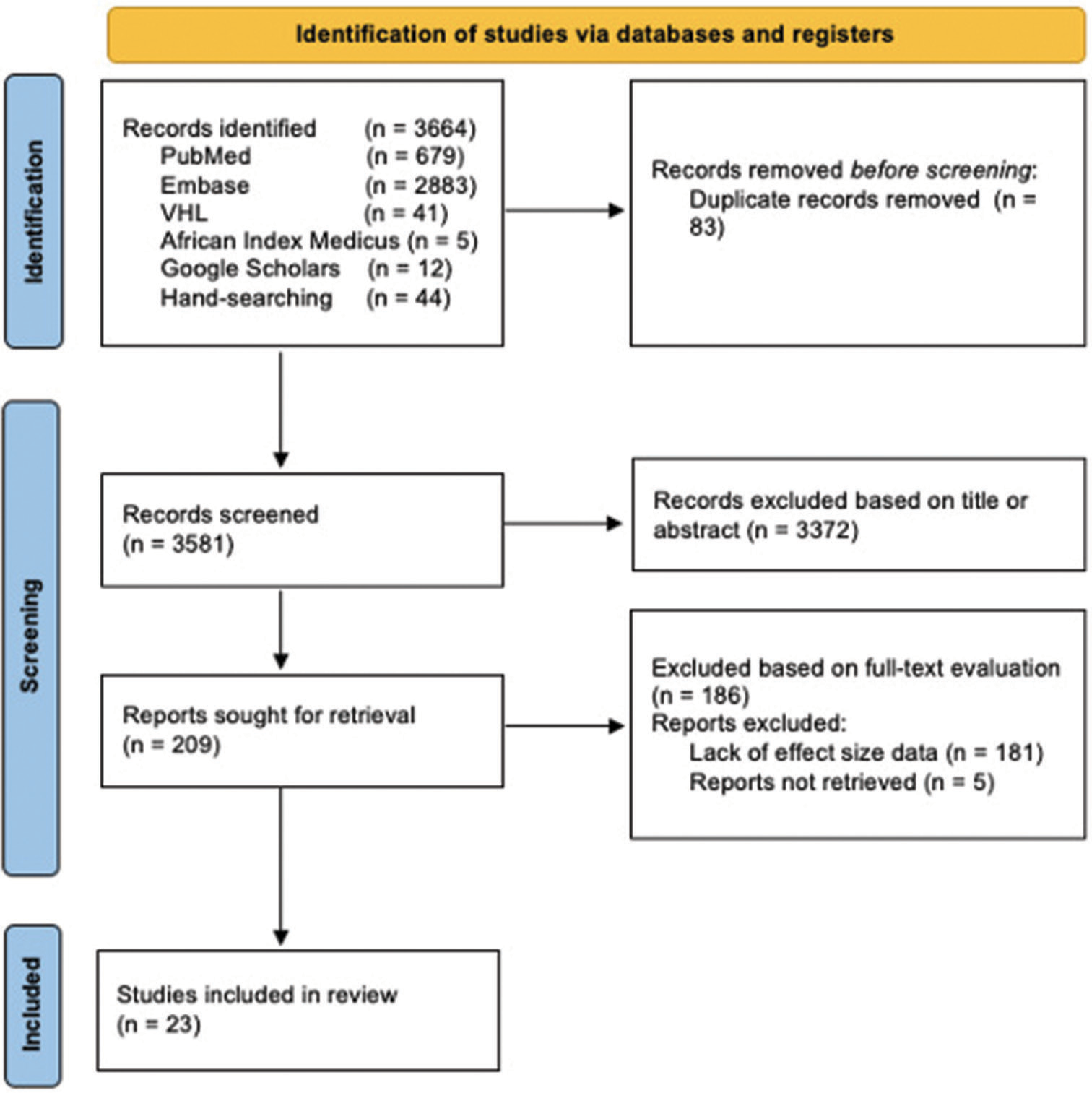Multidisciplinary approach to anaplastic and metastatic meningioma: A case report and review of the literature
Date of publication: 07-Jul-2023
Background: Meningiomas are slow-growing neoplasms, accounting for 20% of all primary intracranial neoplasms and 25% of all intraspinal tumors. Atypical and anaplastic meningiomas are infrequent, representing fewer than 5% of all meningiomas. Unusually, they can show aggressive behavior, and extracranial metastases are extremely rare, representing approximately 0.1% of all reported cases.
Illustrative resection of mixed intra- and extramedullary thoracic spinal cord capillary hemangioma
Date of publication: 30-Jun-2023
Background: Capillary hemangiomas are typically superficial benign tumors of the cutaneous and mucosal tissues of the face and neck in pediatric patients. In adults, they typically occur in middle-aged males who present with pain, myelopathy, radiculopathy, paresthesias, and bowel/bladder dysfunction. The optimal treatment for intramedullary spinal cord capillary hemangiomas is gross total/en bloc resection.
Importance of preoperative coronary artery examination before performing procedures for carotid artery stenosis
Date of publication: 30-Jun-2023
Background: Carotid artery stenosis and coronary artery disease (CAD) often occur simultaneously, with one being an important risk factor in the treatment of the other. This study aimed to perform coronary computed tomography angiography (CTA) as a preoperative evaluation for carotid artery stenosis treatment.
Cerebrospinal fluid rhinorrhea with meningoencephalocele related to Sternberg’s canal: A report of two cases
Date of publication: 30-Jun-2023
Background: Cerebrospinal fluid (CSF) rhinorrhea with meningoencephalocele (MEC) associated with Sternberg’s canal is rare. We treated two such cases.
A rare case of rebleeding brainstem cavernoma in a 5-month-old-girl
Date of publication: 30-Jun-2023
Background: Brainstem cavernomas (BSCs) are relatively rare intracranial vascular lesions that, if left untreated, can be devastating to the patient. The lesions are associated with a myriad of symptoms, depending on their size and location. However, medullary lesions present acutely with cardiorespiratory dysfunction. We present the case of a 5-month-old child with a BSC.
Understanding the molecular profiling of diffuse gliomas classification: A brief overview
Date of publication: 30-Jun-2023
Background: Gliomas represent almost 30% of all primary brain tumors and account for 80% of malignant primary ones. In the last two decades, significant progress has been made in understanding gliomas’ molecular origin and development. These advancements have demonstrated a remarkable improvement in classification systems based on mutational markers, which contribute paramount information in addition to traditional histology-based classification.
Spontaneous resorption of a convexity arachnoid cyst associated with intracystic hemorrhage and subdural hematoma: A case report
Date of publication: 30-Jun-2023
Background: Intracranial arachnoid cysts (ACs) are developmental anomalies usually filled with cerebrospinal fluid (CSF), rarely resolving throughout life. Here, we present a case of an AC with intracystic hemorrhage and subdural hematoma (SDH) that developed after a minor head injury before gradually disappearing. Neuroimaging demonstrated specific changes from hematoma formation to AC disappearance over time. The mechanisms of this condition are discussed based on imaging data.
Middle meningeal artery embolization for symptomatic chronic subdural hematoma in the setting of severe transfusion-refractory thrombocytopenia: A case study and review of literature
Date of publication: 30-Jun-2023
Background: Surgical decompression for the treatment of chronic subdural hematomas (cSDHs) is irrefutably effective; however, its utility in managing cSDH in patients with comorbid coagulopathy remains controversial. The optimal threshold for platelet transfusion in cSDH management is <100,000/mm3, according to guidelines from the American Association of Blood Banks GRADE framework. This threshold may be unachievable in refractory thrombocytopenia, though surgical intervention may still be warranted. We present a patient with symptomatic cSDH and transfusion-refractory thrombocytopenia successfully treated with middle meningeal artery embolization (eMMA). We also review the literature to identify management approaches for cSDH with severe thrombocytopenia.
Prevalence and risk factors of unruptured intracranial aneurysms in ischemic stroke patients – A global meta-analysis
Date of publication: 30-Jun-2023
Background: Unruptured intracranial aneurysms (UIAs) have an estimated global prevalence of 2.8% in the adult population; however, UIA was identified among more than 10% of ischemic stroke patients. Many epidemiological studies and reviews have pointed to the presence of UIA among patients with ischemic stroke; yet, the extent of this association is not fully known. We performed a systematic review and meta-analysis to determine the prevalence of UIA in patients admitted to hospitals with ischemic stroke and transient ischemic attack (TIA) at both global and continental levels and evaluate factors associated with UIA in this population.
The art of good medicine still relies on making the correct diagnosis
Date of publication: 23-Jun-2023



